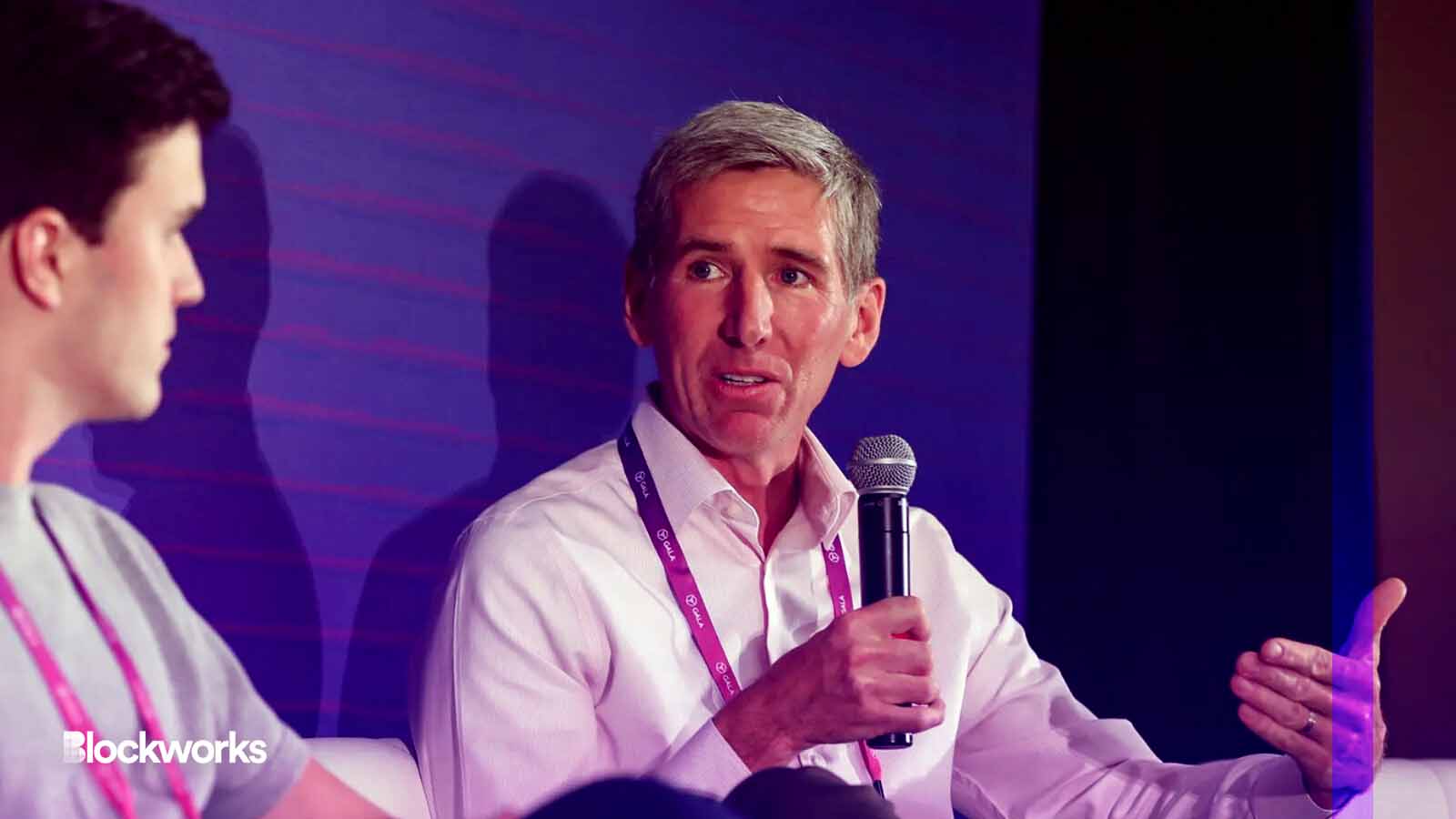Moving Up the Risk Curve: Institutional Investors Cautiously Consider ETH’s Potential
It can take a while for larger entities to adjust their risk profiles, particularly when it comes to the volatile and legally fuzzy world of crypto

Matt Hougan, CIO of Bitwise | Ben Solomon for Blockworks
Institutional investment strategy, especially in crypto, advances at a glacial pace. Judiciously allocating funds, family offices and institutions must ensure legal compliance and carefully protect against massive losses that can result from shifting just a percent or two of a portfolio into the wrong asset.
It wasn’t that long ago that the Ontario teachers’ pension fund saw 95 million dollars swept away in the FTX aftermath — a mere 0.05% of the fund’s total assets. While a Uniswap trader might casually blow a few bucks on a memecoin without legal or financial consequences, things can go south in a much bigger way when a trusted custodian invests a small percentage of hundreds of billions of dollars.
It’s no wonder then, that it can take quite a while for larger entities to adjust their risk profiles, particularly when it comes to the volatile and legally fuzzy world of crypto.
Albeit at a cautious rate, institutional investors are “starting to exit the bear market mentality,” says Bitwise Chief Investment Officer Matt Hougan, as he spoke to Blockworks on the 0xResearch podcast. “Even though the market has been trading sideways for a while, they’ve woken up to the fact that it’s the best performing asset class in the world.”
He acknowledges concerns around regulation persist but says as institutions begin “putting their toe in the water,” he expects to see asset flows shift back into crypto over the next few months.
As a relatively safe bet, bitcoin — perceived to be the most secure and established of all crypto networks — has been the focus of most large-scale investment in the past, but appetites seem to be changing, he says.
Hougan sees a preference for ether (ETH) emerging with “the family office and institution side thinking about just a very small allocation” in crypto.
“Now, I would say there’s actually more interest in ETH than there is even in bitcoin from many of the institutions that we talk to.”
One step further on the risk curve
Whereas interest used to be “bitcoin-only,” Hougan says ether is now getting attention as an asset that is “one step further on the risk curve.”
DeFi protocols are not yet on the radar, Hougan says, but investment in layer-2 solutions might be “just around the corner.”
“But the big change,” he says, “has been from bitcoin, to bitcoin and ETH.”
Those who are deeply entrenched in the crypto market “live a few years ahead of where the institutional market is,” Hougan says, “so that’s a tired story for us, but it’s a brand new story for many of these folks.”
You have to allocate when it hurts
Bitwise crypto research analyst, Ryan Rasmussen says more clients are asking about the crypto market due to its outstanding performance during the first quarter.
“To not have an allocation to crypto,” Rasmussen says, is “becoming a business risk for them as financial advisors, as institutional investors.”
“So I do think it’s a good time for them to allocate. You don’t want to see it pop another 20, 30, 40% and still not have the appropriate allocation.”
Hougan adds, “You have to allocate when it hurts. You have to allocate when it’s ugly.”
“If you wait for us to get regulatory clarity and for the macro uncertainty to vanish,” he says, “you’ll definitely have missed.”
Hougan suggests investors can find success “by having a little bit more information about the market than what most of the market sees.”
“You can succeed by looking abroad and seeing regulatory progress, even as we see regulatory challenges in the US. You can succeed by realizing the sort of technological revolution taking place with layer-2s and the Ethereum blockchain, when the market isn’t focused on that.”
“But it’s always going to be painful when you’re buying at the right time. It’s never easy — and that’s true right now.”
Get the news in your inbox. Explore Blockworks newsletters:
- The Breakdown: Decoding crypto and the markets. Daily.
- 0xResearch: Alpha in your inbox. Think like an analyst.






